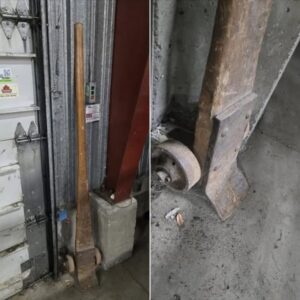A day of violent armed rioting at a prison in southwest Ecuador on Sunday led to the deaths of at least 31 inmates, the country’s prisons agency said.
Twenty-seven prisoners in port town Machala died due to asphyxiation and ‘immediate death by hanging,’ according to a statement shared on X by the SNAI prisons agency. There were no other details about how the prisoners died.
Authorities said they were still working to ‘fully clarify the facts,’ and forensic medical personnel were on site to verify information.
Earlier Sunday, SNAI reported that four people had been killed due to the deadly rioting, which was later brought under control by tactical police.
The incident broke out around 3:00am (0800 GMT) at the prison, where local residents recalled hearing gunfire, explosions, and cries for help coming from inside the prison’s walls.
Elite police teams entered the prison immediately and regained control after the riot broke out, the agency said.
But it did not specify the identities of the deceased or confirm whether the violence was another case of inter-gang fighting.
Four people died in the morning violence, while 33 inmates and one police officer were injured, SNAI said.
That riot was prompted by a reorganisation of the prisoners in a new maximum security facility, the statement said.
Ecuadoran prisons have become operational centers for rival drug-trafficking gangs, with over 500 inmates killed in fighting between groups competing to control the lucrative but illegal trade.
They are now considered the ‘epicenter’ of the country’s organised crime, according to a 2024 report by Insight Crime think tank.
President Daniel Noboa’s administration, which has pledged to take a tough stance on crime, blames the violence on rival gangs battling for dominance and territorial control.
In September, a riot caused by gang fighting in the same prison left 14 people dead and another 14 wounded.
Ecuador prison bloodbath as inmates are decapitated in mass slaughter
In that incident, prisoners used guns and explosives and an unknown number escaped. Some were recaptured.
Days later, another 17 people were killed in a prison riot in the northern city of Esmeraldas, near the border with Colombia.
Bloody fighting broke out in a prison in the troubled coastal city, where police said they found 10 dead prisoners in two cell blocks.
Images of the aftermath shared on social media and verified by AFP showed dead men sprawled on the ground with bare, blood-stained torsos, at least two of them decapitated.
Dozens of worried family members gathered outside the prison for news of their loved ones as the SNAI prison authority raised the official toll from 10to 17 within a few hours.
‘There are women here who have been asking after their relatives since 5:30am,’ an anguished woman, who asked not to be named, told AFP at the time.
She herself rushed to the prison after receiving a call from people who live nearby and told her ‘they heard the shooting, they heard the screams.’
When she arrived, she said, soldiers told her to go to the morgue to check if her loved one was dead or alive.
Since February 2021, gang wars have largely played out inside the country’s prisons, where inmates have often been killed in gruesome fashion – their bodies dismembered and burnt.
Ecuador’s biggest prison massacre also took place in 2021, when more than 100 inmates were killed in the port city of Guayaquil in the southwest.
Inmates have on more than one occasion gone live on social media to broadcast their violent campaigns, showing off the decapitated and charred bodies of their enemies.
Last year, gang members took scores of prison guards hostage after the jailbreak of narco boss Jose Adolfo Macias, known as Fito, while allies on the outside detonated bombs and held a television presenter at gunpoint live on air.
Nestled between Peru and Colombia, the world’s two largest cocaine producers, Ecuador has become a major hub for the global cocaine trade.
More than 70 per cent of all cocaine produced in the world now passes through Ecuador’s ports, according to government data.
The tiny country of some 18 million people has become engulfed in violence in the past few years and is now one of the most dangerous places in Latin America.
The roots of this crisis ‘can be traced directly to the country’s prison system and the criminal networks that have evolved inside of it,’ Insight Crime found.




